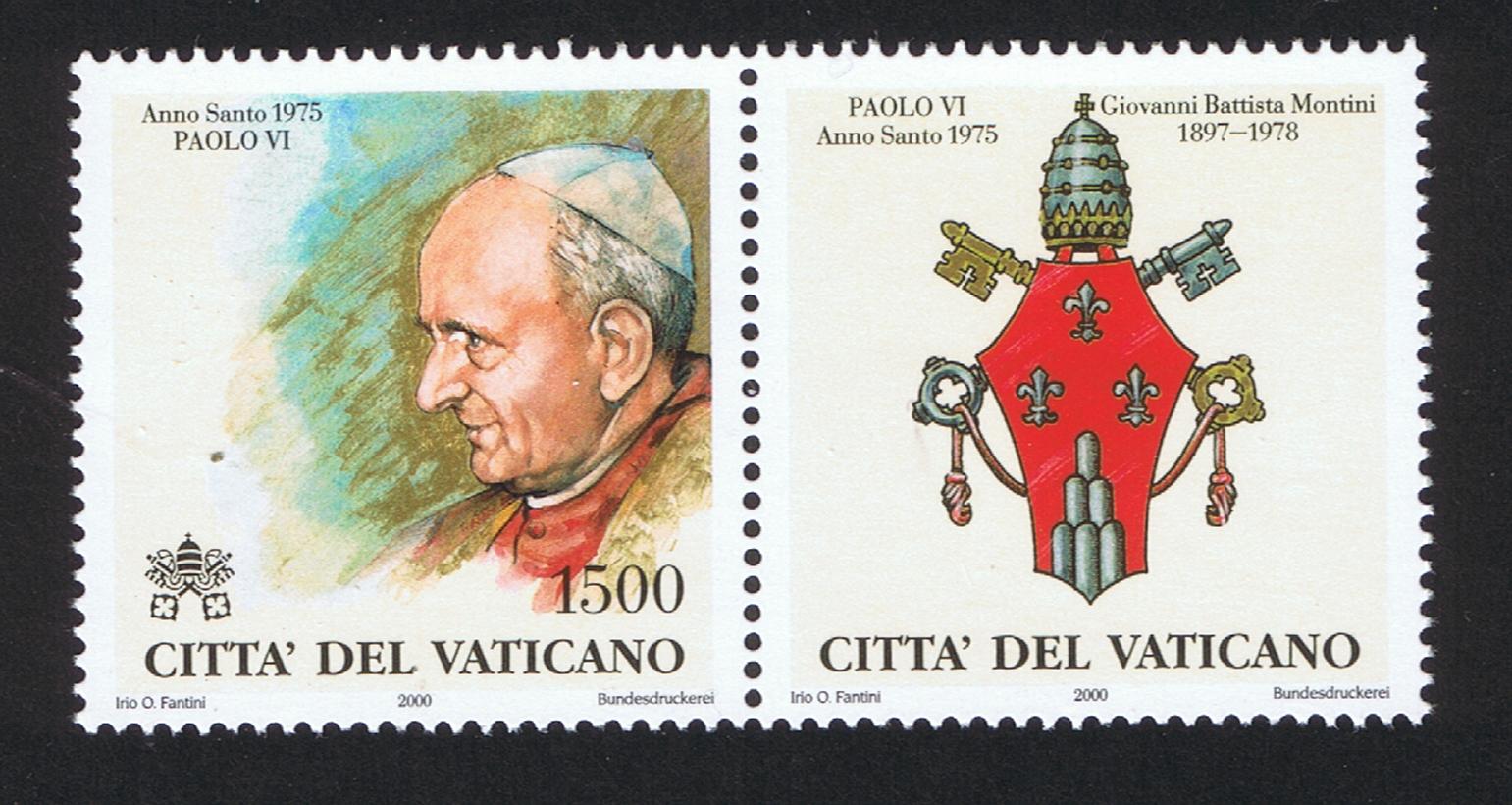
Home
   
The tradition of a papal tiara emerged somewhere around the 10th century and by the 1300s it had developed into a three-tier shape. It was placed on the head of newly elected Popes as a symbol of transferring the office of the papacy. Very often a newly elected Pope would have a new tiara made for their coronation. Over the years papal tiaras have not been isolated from the various intrigues of the papal histories. Here are some interesting tales tied to the papal tiara. 
 Pope Martin V, Scott 1068 (1998) Pope Clement VII, Scott 1072 (1998) In the early 1400's, the papacy was in a difficult financial situation, faced with the construction of a new Saint Peter's Basilica (a very expensive undertaking). To raise funds, Pope Martin V sold several valuable items from the papal treasury, including the papal tiara. In 1417, Pope Martin V sold a papal tiara to King Sigismund of Hungary for 3,000 florins, which was a significant sum of money at the time. The tiara remained in Hungary for many years and was even worn by some Hungarian kings during their coronation ceremonies. In 1526, the Ottoman Empire invaded Hungary and defeated the Hungarian army at the Battle of Mohács. The Hungarian king, Louis II, was killed in the battle, and the papal tiara was lost. However, it was later recovered by the Habsburgs, who had close ties to the papacy. In 1530, King Charles V of Spain returned the papal tiara to Pope Clement VII as a gift. 
 Pope Pius VI, Scott 245 (1958) Pope Pius VII, Scott 246 (1958) During the Napoleonic Wars, in 1798, the French occupied the Italian peninsula and abducted Pope Pius VI, who would die in captivity in France in 1799. In addition, the papal tiara was stolen by French troops when they occupied Rome and looted the papal palace. The tiara was taken to Paris and placed in the Louvre Museum as a spoil of war, where it remained for many years. Following a prolonged interregnum, Pope Pius VII was elected pope in March of 1800. With the gold/silver/jeweled tiara not available, and with materials in short supply due to the wartime conditions, the Venetian government commissioned a tiara that was partially made of paper-mâché and covered in velvet and gold thread. The new Pope Pius VII was crowned with this tiara at a coronation ceremony that took place in Venice due to the occupation of Rome by the French army. This tiara was used again in 1823 for the coronation of Pope Leo XII, and it is now part of the Vatican's collection of papal tiaras. Eventually, in 1849, the French returned the stolen tiara to the papacy. Napoleon III, the nephew of Napoleon Bonaparte, had become the ruler of France and returned the tiara as a gesture of goodwill to the newly elected Pope Pius IX.  Pope Pius IX Scott #1144 (2000)  Pope Paul VI Scott #1148 (2000) The use of papal tiaras continued to be a staple of papal life as Vatican City emerged into the twentieth century. However, with the coming of Vatican II, Pope Paul VI developed a different perspective. He had been elected on June 21, 1963, and had been crowned using the traditional papal tiara on June 30, 1963. On October 16, 1963, the Vatican Post Office issued stamps commemorating the coronation, including two stamps showing Pope Paul VI wearing the papal tiara (see the stamps on the covers shown at the bottom of this article). Then, on November 13, 1964, after celebrating Mass with 2,000 bishops, the Pope rose from his chair and solemnly placed his tiara on the altar. Pope Paul VI declared that the papal tiara would be sold to help feed the poor. Shortly after this announcement, Cardinal Francis Spellman of New York City arranged for the tiara to come to the United States, as a gift acknowledging the generous contributions of American Catholics to helping the world’s destitute. Several other papal tiaras were also sold off by Pope Paul VI. In 1963, he sold the tiara that had been made for Pope Pius XI in 1922, and in 1968, he sold another 19th-century papal tiara that had been acquired by the Vatican in the 19th century. All proceeds from these sales were donated to charity. The papal tiara of Pope Paul VI (known as "the Coronation Tiara of Pope Paul VI") that Cardinal Francis Spellman arranged to come to the United States was displayed at the 1965 New York World's Fair and was later transferred and donated to the Basilica of the National Shrine of the Immaculate Conception in Washington, D.C. where it is now on display in the church crypt along with other papal artifacts. As a note, a second papal tiara can be found in the United States at the University of Notre Dame University in Indiana. This tiara was reportedly owned by Pope Pius IX, but it was not his coronation tiara. Efforts to make contact at Notre Dame and get confirmation have thus far proved fruitless. There is still a papal tiara on display in the St. Peter Basilica treasury in Vatican City. It is a 19th-century tiara that was made in Rome, Italy. The exact date of its creation is not known, but it is believed to have been made sometime in the mid-1800s. This tiara is made of gold, silver, and precious stones, and it is decorated with intricate designs and symbols that represent the power and authority of the papacy.  Pope Paul VI Coronation Stamps Scott #365-368 (1963)  References |